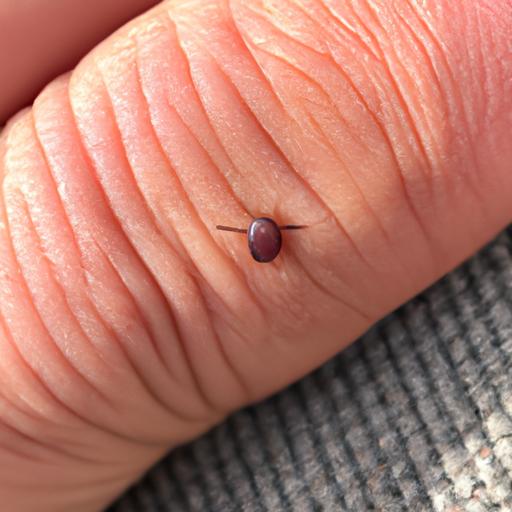What Is Lyme Disease?
Lyme disease is a bacterial infection that is transmitted through tick bites. It is caused by the bacterium Borrelia burgdorferi and can affect people of all ages. The disease is most commonly found in areas with high populations of deer and mice, which are the primary hosts for the ticks that carry the bacteria.
Causes of Lyme Disease

The primary cause of Lyme disease is the bacterium Borrelia burgdorferi, which is transmitted to humans through the bite of an infected tick. The ticks that carry the bacteria are commonly found in wooded and grassy areas, particularly in the Northeastern and Midwestern regions of the United States.
The risk of contracting Lyme disease is highest during the spring and summer months when ticks are most active. In addition, individuals who spend a lot of time in wooded or grassy areas, such as hikers, campers, and outdoor workers, are at a higher risk for contracting the disease.
It is important to note that not all ticks carry the bacteria that cause Lyme disease. In fact, only a small percentage of ticks are infected with the bacteria. However, it is still important to take precautions to avoid tick bites and to seek medical attention if you experience any symptoms of Lyme disease.
Symptoms of Lyme Disease
The symptoms of Lyme disease can vary depending on the stage of the infection. In the early stages of the disease, symptoms may include fever, headache, fatigue, and a characteristic skin rash called erythema migrans. The rash typically appears within a few days to a few weeks after the tick bite and may be accompanied by flu-like symptoms.
In later stages of the disease, symptoms may include joint pain, neurological problems, and heart palpitations. These symptoms can be severe and may require hospitalization. It is important to seek medical attention if you suspect that you may have Lyme disease, as early treatment can help prevent more serious complications.
Symptoms of Lyme Disease (continued)
In addition to the early and late-stage symptoms of Lyme disease, there is also a condition known as post-treatment Lyme disease syndrome (PTLDS). This occurs in some individuals who have been treated for Lyme disease but continue to experience symptoms such as fatigue, joint pain, and cognitive difficulties. The exact cause of PTLDS is not well understood, but it is believed to be related to an ongoing immune response to the original infection.
The diagnosis of Lyme disease is typically based on a combination of symptoms and laboratory tests. Blood tests can be used to detect the presence of antibodies to the bacteria that cause Lyme disease, but these tests can sometimes produce false negatives. A diagnosis of Lyme disease may also be based on a characteristic rash and a history of potential exposure to ticks.
Treatment of Lyme Disease
The primary treatment for Lyme disease is a course of antibiotics. The specific antibiotic used will depend on the stage of the disease and the severity of the symptoms. In early-stage Lyme disease, a course of oral antibiotics such as doxycycline or amoxicillin is typically sufficient. Late-stage Lyme disease may require intravenous antibiotics.
In addition to antibiotics, there are also alternative treatments that may be used in conjunction with or instead of antibiotics. These may include herbal remedies, homeopathic treatments, and other natural therapies. However, it is important to note that there is limited scientific evidence to support the effectiveness of these alternative treatments.
It is also important to note that early treatment of Lyme disease is crucial to prevent more serious complications. Delayed treatment can lead to more severe symptoms, such as joint pain and neurological problems, that may be more difficult to treat. If you suspect that you may have Lyme disease, it is important to seek medical attention as soon as possible to receive prompt treatment.
Prevention of Lyme Disease
Preventing Lyme disease involves taking measures to avoid tick bites and to detect and remove ticks as soon as possible. Some protective measures against tick bites include wearing long-sleeved shirts and pants, using insect repellent, and avoiding areas with high tick populations. It is also important to check your body for ticks after spending time outdoors, particularly in wooded or grassy areas.
Early detection and removal of ticks is also crucial in preventing Lyme disease. Ticks should be removed as soon as possible, ideally within 24-48 hours of attachment, to reduce the risk of infection. If you find a tick on your body, use tweezers to grasp the tick as close to your skin as possible and pull upwards with steady, even pressure. After removing the tick, clean the bite area with rubbing alcohol or soap and water.
Conclusion
In conclusion, Lyme disease is a serious bacterial infection that can have long-term health consequences if left untreated. It is important to be aware of the symptoms of Lyme disease and to take measures to prevent tick bites and detect and remove ticks as soon as possible. By taking these steps, we can reduce the risk of contracting Lyme disease and protect our health and well-being.
At Zahnweiss Info, we are committed to providing the latest updates on dental health news, treatments and therapies, inspiring patient stories, and expert advice. We hope that this article has been informative and helpful in raising awareness about Lyme disease and the importance of prevention. With continued research and awareness, we can hope for a cure in the future.




